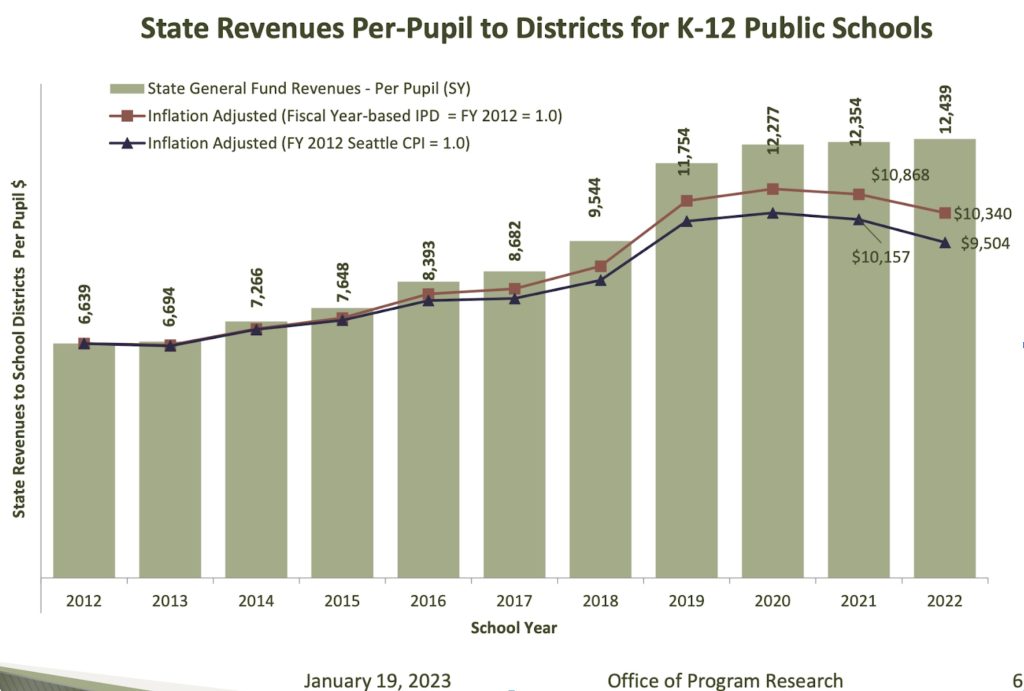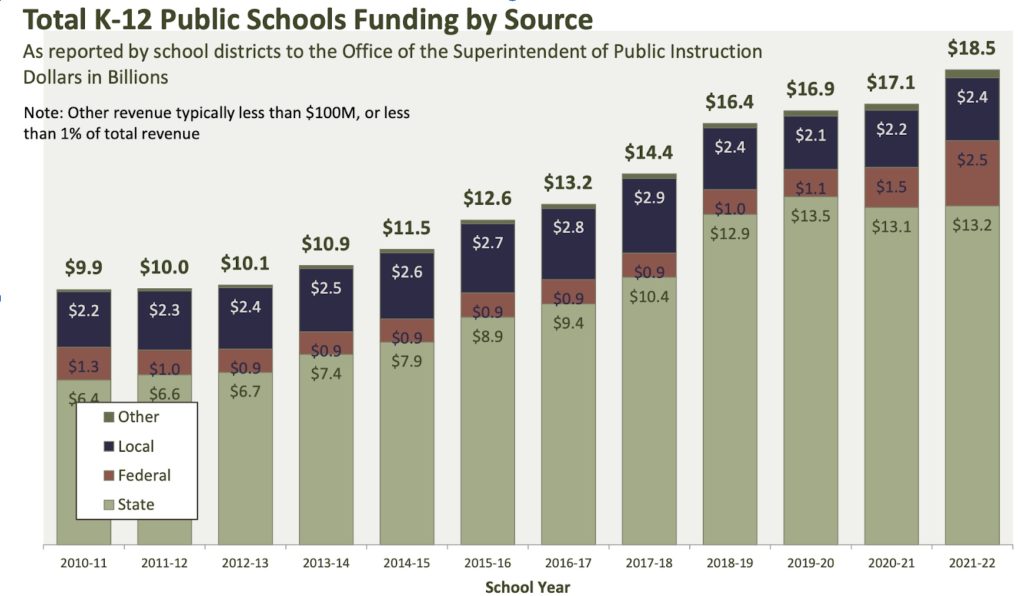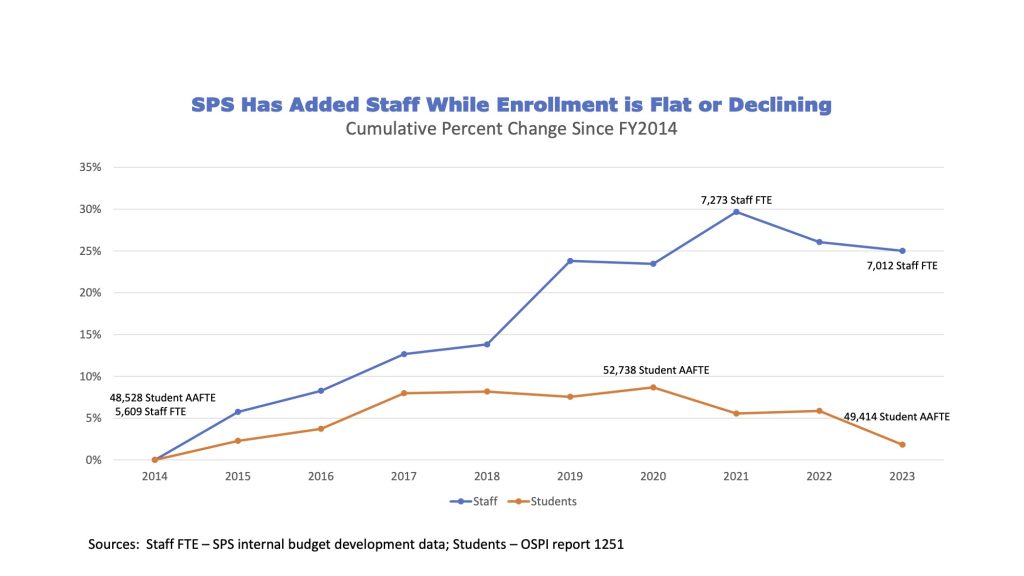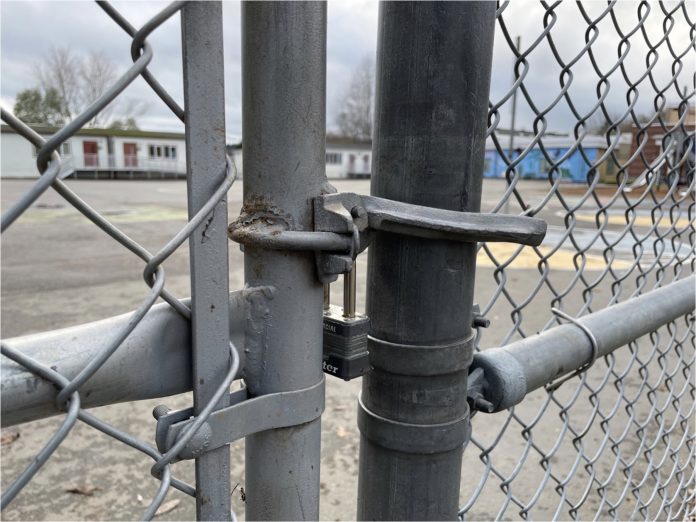A public school is an essential part of any community. Here in Seattle, public schools are in crisis.
Last month, Seattle Public Schools (SPS) announced their intention to close schools and consolidate students into schools with larger student populations. This comes on the heels of recent reports that SPS may also scale back or even eliminate school bus services.
Research shows school closures have a devastating impact on students and neighborhoods. Were SPS to follow through on these catastrophic cuts, it will undermine efforts to attract and retain families in Seattle. It will also cause untold spin-off effects, from decreasing the number of teachers who live in the city to increasing traffic as families who drive their kids to school. All of these lead to impacts like destroying working class communities and slashing road safety efforts.
Despite the headlines, the actual statements of SPS administrators make it explicitly clear that the district wants to close schools regardless of financial needs or enrollment changes. Interim deputy superintendent Fred Podesta said “consolidating into larger schools that have the resources they need is a good strategy whether you have money problems or not.”
SPS acknowledges that closing schools will only dent the district’s budget woes, not solve them. Still, the district appears set to plow ahead with their disruptive and damaging closure plans. In order to slow or stop this process, we need to understand why it is happening.
What’s happening is bleak. Seattle’s public schools face disastrous failures by three levels of government: the Washington State Legislature persistently underfunds education, the City of Seattle zones against housing that attracts and retains families, and Seattle Public Schools mismanages finances and student population projections. The result is a perfect storm that threatens not only the future of public education, but the future of Seattle.

The Washington State Legislature steals urban and rural school funds
At the core of the crisis facing every school in Washington is the state legislature’s ongoing refusal to amply fund public education. In the 2012 McCleary case, the Washington Supreme Court ruled that the state legislature needed to spend more money on K-12 public education to comply with the state constitution. The legislature dragged its feet and was held in contempt for five years, until 2017 when the legislature adopted a new education funding system.
The new funding concept was designed to provide the minimum amount of funding the legislature believed the court would accept to meet McCleary. Cash came primarily from a levy swap, a financial mechanism long advocated by Republicans that traded local school levies for a centralized and capped increase in the state property tax. The end result was the largest property tax hike in state history.
Under this funding system, taxes on Seattle’s largest-in-the-state property values get sent to other jurisdictions, bleeding the city dry to fund less than what outlying schools actually need. Last fall Washington’s Paramount Duty published a report demonstrating the legislature’s funding system was “designed to fail,” leaving districts across the state facing huge cuts. Bellevue is proposing to close schools, and Mercer Island has considered the same. Everett faces program cuts.
The McCleary case was designed to end dependence on local levies, but has failed. Marysville is trying a second time to pass a local levy next week. If it does not pass again, district leaders have floated the possibility they may need to dissolve the public school district for lack of funding. Even Chimacum, home to the McCleary family, is facing budget cuts. The result of the state legislature’s dithering is schools across the state face a fiscal crisis and Olympia is not taking the crisis seriously.


The City of Seattle fails to welcome families
Compounding the state’s deliberate underfunding of public education is the legacy of restrictive zoning rules that have priced families out of Seattle and other nearby cities. While SPS refuses to survey exiting families to understand their de-enrollment decisions, it is clear that rising housing costs make it harder for families to stay in the city, especially low-income families.
Earlier this week UW associate professor of education finance and policy Dr. David Knight flagged this issue as an important factor in school funding:
“I’ve heard people say things like, the families that live near aren’t having children, but I think the real issue is, families can’t afford to move into these neighborhoods,” Knight said. “We don’t have affordable housing in or around the districts experiencing this decline in enrollment, so as we’re talking about district health we also have to think about housing policy and where people can afford to live.”
Current zoning nestles most K-12 schools in the 75% of Seattle zoned for single-family detached houses, which have increased in price four-fold since 2000. Without changes to current zoning policies, Seattle runs the risk of pricing out families and following in the footsteps of Marin County, California, which saw the largest population decline in California largely due to a lack of children.
Now, Seattle schools’ population change has not been bad enough to warrant closing schools. While the district relies on unnecessarily dire predictions, SPS enrollment decline has not been as precipitous as the impacts of the pandemic and housing costs would suggest. SPS has lost about 3,000 students since the start of the 2019-20 school year. That brings the district down to the same enrollment they had in 2013-14, with roughly the same number of schools as are currently in operation.
SPS has a poor record when projecting enrollment. In the mid-2000s, SPS projected a collapse in enrollment that they used to justify closing schools before. Their projections did not take into account burgeoning enrollment at Seattle preschools, and sure enough, the district had to spend tens of millions of dollars to reopen schools in the early 2010s just a few years after having closed them.
Those projections are premature anyway. There is renewed hope that the city and the state will finally act to undo restrictive zoning that constrained growth earlier in the century. Legislative measures like HB 1110 would allow for missing middle housing to be built in even the most restrictive zones. It was amended to include proximity to a school as one of the factors that would allow more density. Paired with the city’s Comprehensive Plan update process which is underway, there is hope Seattle will not continue its exclusionary zoning policies and will instead welcome more families to our city.

Seattle Public Schools cannot make common sense improvements
Seattle Public Schools have been dealt a bad hand by the state legislature’s persistent underfunding and City Hall’s unwillingness to make it affordable for families to live here. They have misplayed that hand at every turn, making matters worse.
Many families that remain in Seattle Public Schools since the pandemic do so because they like the quality of their child’s school, especially the teachers. Students attend school for the teachers, not the district.
The reason is most evident when the district’s leadership takes a top-down approach to management, dismissing public input and making decisions that run directly counter to what families want. Recent examples from 2022 include an effort to change school bell times that caused massive resistance (and was ultimately abandoned), the firing of a popular and effective principal at Cleveland High School despite an outcry from families, and a strike that delayed the start of school despite widespread public support for teachers.
Again, SPS does not conduct exit surveys of families who leave the district, so we do not know if controversial changes to curriculum and programs drove students from the schools. But we do understand mealy-mouth bureaucratic speak. Rather than present the financial issues — which do not support losing capacity — district administrators instead announced their plans to shutter schools without warning at a work session in mid-January. Administrators tried to obscure their actual intentions by discussing “consolidation” and presented it as a done deal, asking board members for their reactions rather than seek their approval to proceed with closure planning.
When faced with similar proposals to close schools, voters in Oakland threw out incumbent school board members last November and replaced them with new board members who promptly reversed school closure plans. This fall, four of the seven Seattle Public Schools board director seats are up for election, enough to create a new majority on the board.
How to save our public schools
Given the devastating impact that school closures would have on communities, on housing production, and on Seattle’s ability to attract new residents, the City Council should step in and seek a moratorium on closures. If SPS does not cooperate, the council must withhold Families and Education Levy funding in order to force SPS to the table.
It is the role of the state and the city to deliver great public schools for everyone rather than manage decline and allow the slow collapse of public education in Seattle. That means the state legislature must eliminate the cap on special education funding and pass a wealth tax to pour billions more into K-12 public education. The legislature and council can eliminate exclusionary zoning policies, passing legislation and updating the Comprehensive Plan with new policies that make it easier for families to stay here and move here. The City must bar SPS from any school closures, particularly during the Comprehensive Plan process as these would undermine efforts to grow the city’s population and retain families.
And finally, the school district needs to get over its hostility to partnering with the public and abandon its top-down approach to governance. Instead, district leaders should convene SPS families, teachers, and community leaders and let them determine the best path forward as SPS deals with enrollment changes and financial challenges. SPS also must begin surveying families that leave the district to understand why they are leaving. It’s inexcusable that this data has still not been collected.
Ultimately, Seattle needs to articulate a vision for the future of Seattle Public Schools, including fixing persistent mismanagement failures. If that means electing a new board majority committed to avoiding closing schools, implementing these reforms, and building a great school district, elections are in November.

Robert Cruickshank
Robert is the Director of Digital Strategy at California YIMBY and Chair of Sierra Club Seattle. A long time communications and political strategist, he was Senior Communications Advisor to Seattle Mayor Mike McGinn from 2011-2013.

